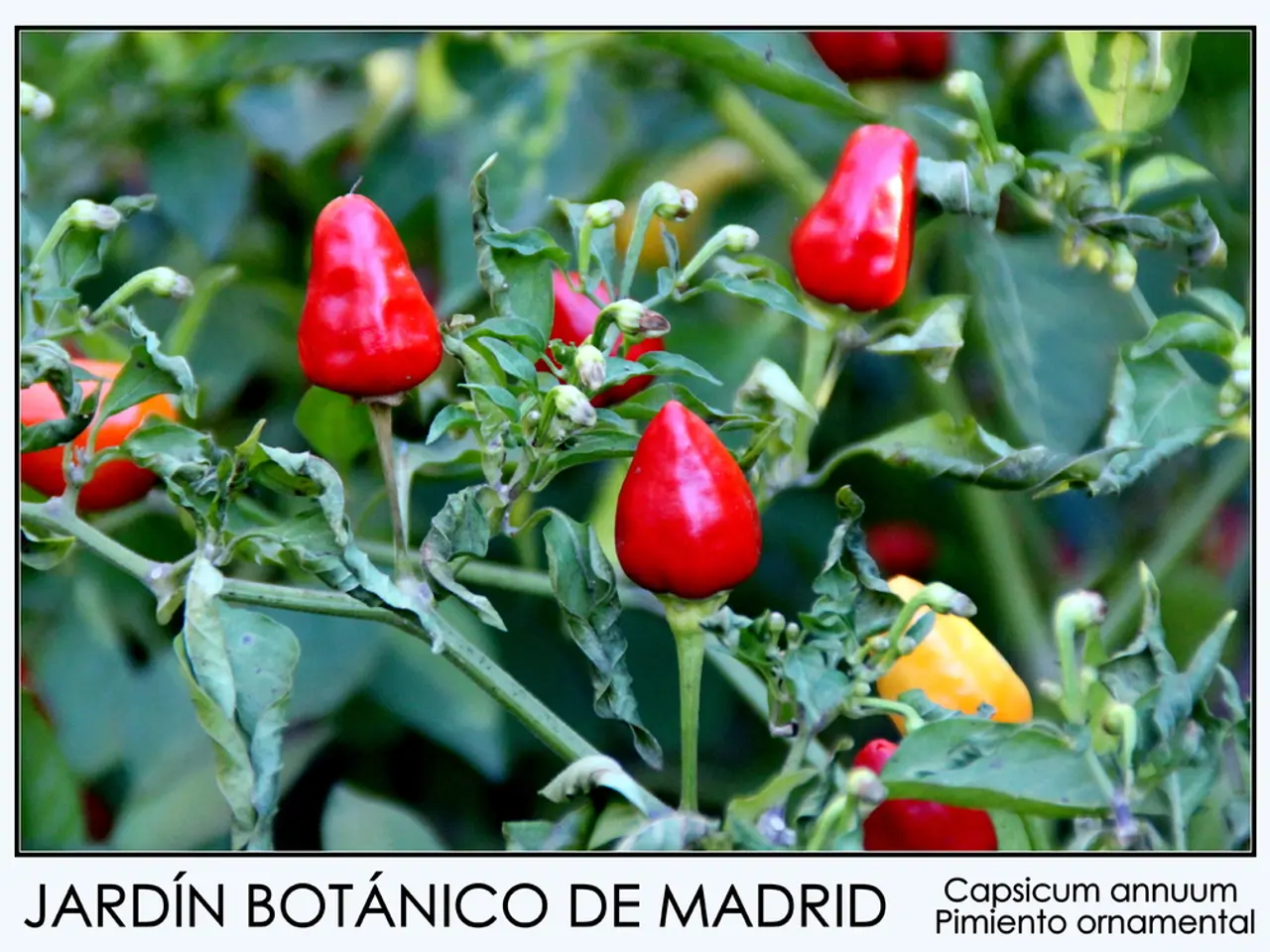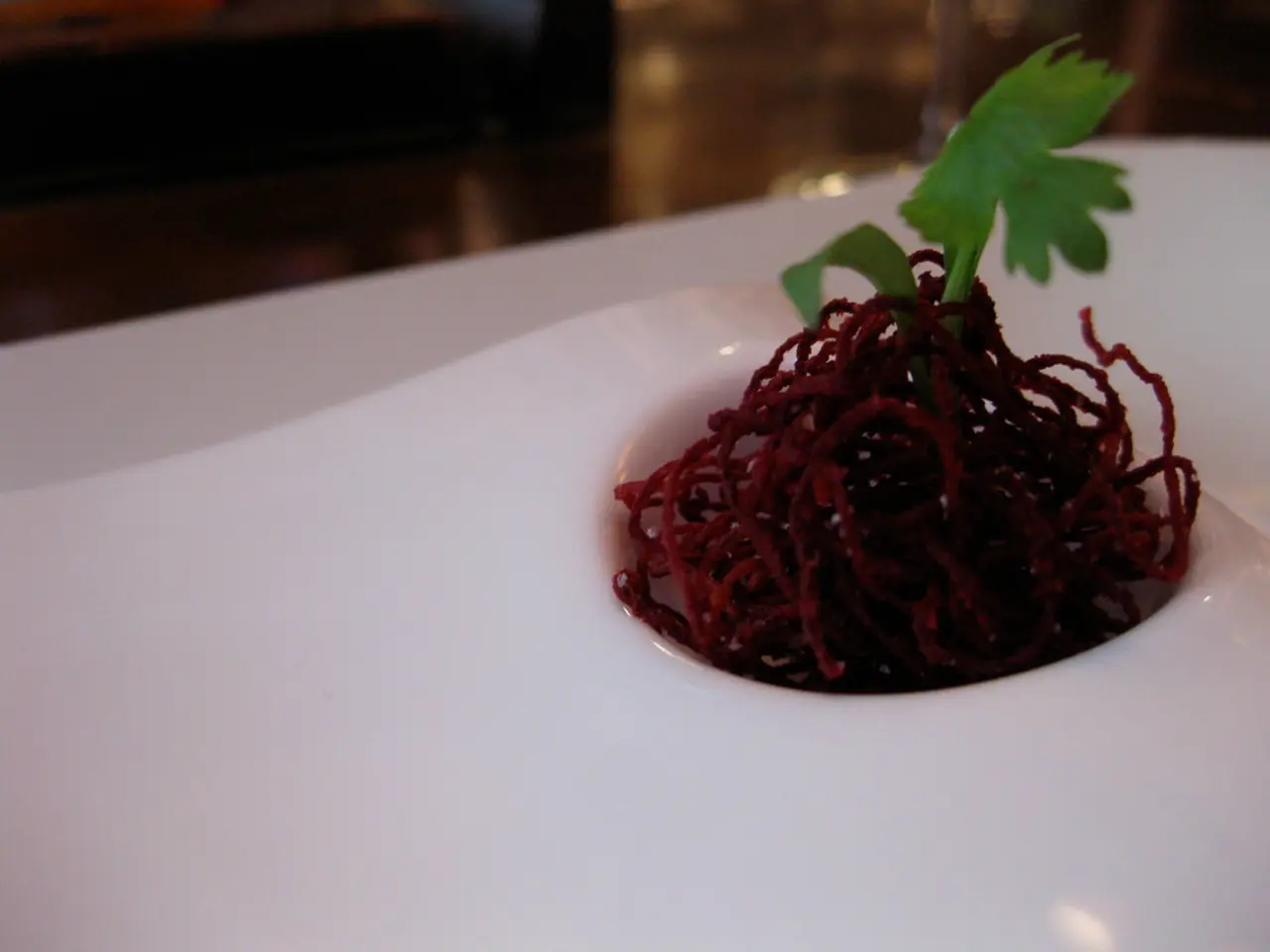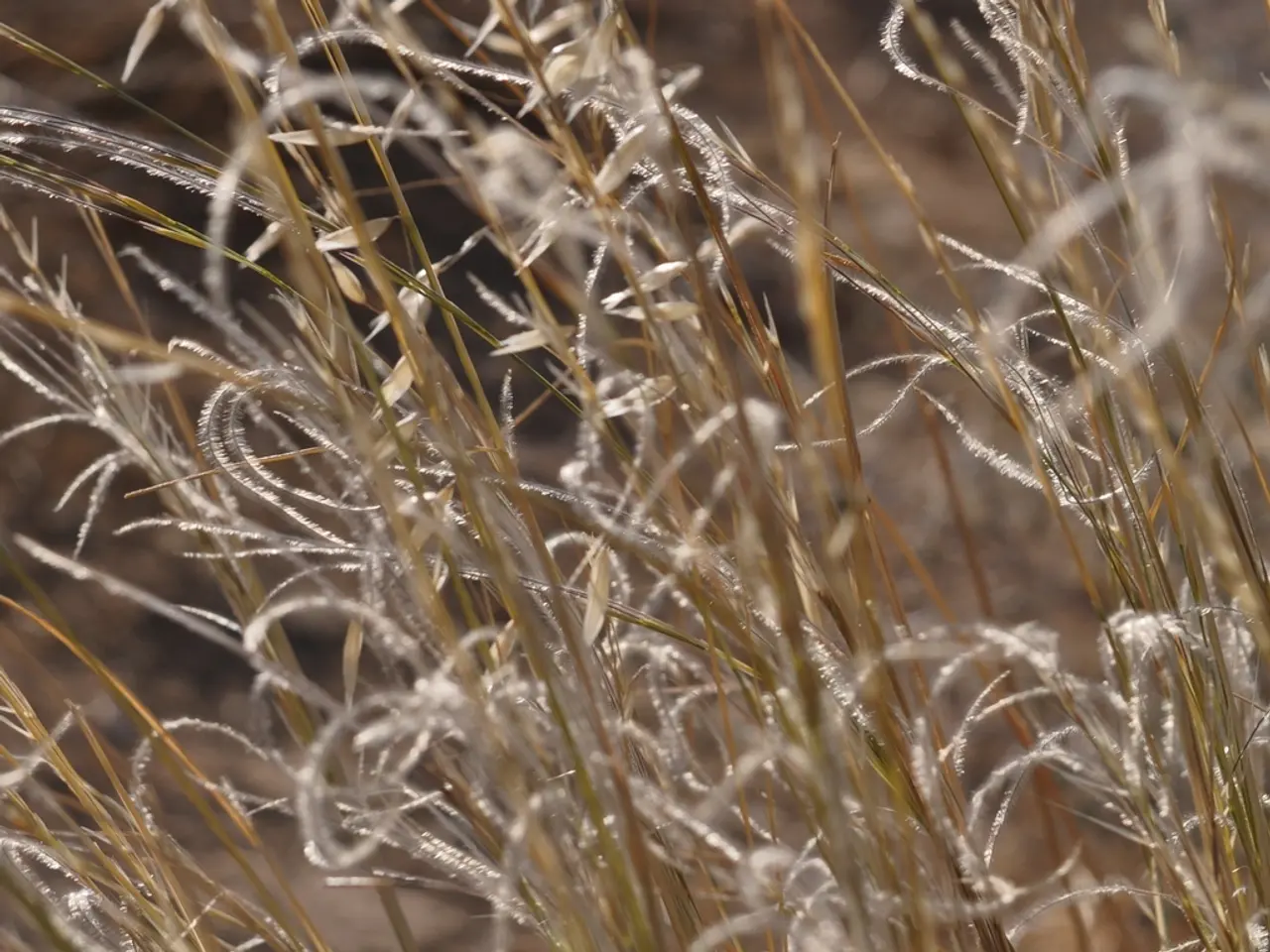Comprehensive Overview of Various Grass Species and Techniques for Identifying Your Own Turf Type
Hey there, grass enthusiast! When it comes to maintaining a lush, green lawn, knowing what exactly grows in your backyard is crucial. Here's a no-nonsense, informative guide to help you identify and care for the most common grass types. We consulted with experts and landscaping pros to bring you the ins and outs.
What ya got growin' on?
First things first, figure out your grassy situation. Locate your growing zone - some grasses thrive in warmth, others in cool temperatures. Begin by examining common features such as blade shape, color, growth patterns, and bud formation. Check out how new leaves (known as vernation) are formed, and pay attention to an overgrowth around the blade's base called the auricle.
The Scoop on Privacy...err...Popular Grass Types
We've gathered the lowdown on the most common grass types and how to care for each one.
Annual Ryegrass
Annual ryegrass is a cool-weather grass that adds vibrant color to winter lawns. It spreads quickly in milder temperatures, but won't regrow the following year.- Blade: Narrow, pointed tip, and smooth edges- Color: Bright green- Growth: Fast, forms clumps- Water: Once or twice a week once established- Maintenance: Mow frequently in spring since it grows rapidly in warmer temperatures.- Climate: cool season // Growing zone: USDA 4-9
Bahiagrass
A warm-season grass, Bahiagrass boasts rapid growth and thrives in hot, humid climates. It's perfect for areas where other grasses struggle. Remember, Bahiagrass spreads aggressively, but can be tamed with proper care.- Blade: Wide with hairy edges and a pointed tip- Color: Light green- Growth: Fast, spreads via underground rhizomes- Water: During droughts to avoid brown patches- Maintenance: Mow frequently in spring, summer, and fall to control growth.- Climate: warm season // Growing zone: USDA 7-11
Bermudagrass
Bermudagrass is an aggressive, heat-loving grass commonly found in the southern United States. It's great for high-traffic areas and recovers quickly from stress or damage.- Blade: Narrow, rough edges, and a pointed tip- Color: Light to dark green- Growth: Spreads via stolons and rhizomes- Water: Little to no irrigation, water during droughts to avoid brown patches- Maintenance: Keep mowed short (under 2.5 in), and control growth through frequent mowing.- Climate: warm season // Growing zone: USDA 7-10
Buffalo
Buffalo is a low-maintenance grass with a hardy nature. It thrives best in full sun, though may appear patchy or sparse in shaded or high-traffic areas. Consider buffalo as your go-to for easy-breezy lawn care.- Blade: Narrow, hairy near the base and a pointed tip- Color: Gray-green or blue-green- Growth: Moderate, spreads via above-ground stolons- Water: Almost never required, exceptionally drought-tolerant- Maintenance: Mow every 3-4 weeks, keep length around 3-4 in, or weekly for a more manicured lawn.- Climate: warm season // Growing zone: USDA 3-10
Centipede
Centipede grass is a slow-growing, coarse warm-season grass that requires minimal fertilizing. It grows best in sunny locations. To maintain shady areas, we recommend blending in a grass like zoysia or St. Augustine.- Blade: Medium-wide, hairy near the base and a pointed or boat-shaped tip- Color: Light green- Growth: Slow, spreads via above-ground stolons- Water: During periods of drought to avoid browning- Maintenance: Mow when length reaches 2.5 in.- Climate: warm season // Growing zone: USDA 7a-10a
Creeping Bentgrass
Creeping bentgrass is a cool-season grass that performs best in sunny areas with moist soil. It often pops up on golf courses but is somewhat challenging to care for and maintain in home lawns.- Blade: Narrow, flat- Color: Bright green, loses color early in the fall and is slow to regain it in the spring- Growth: Fast, spreads via stolons to form mats- Water: Frequently- Maintenance: Regularly mow and dethatch to keep it looking its best and prevent matting. Frequent fertilizing is also necessary.- Climate: cool season // Growing zone: USDA 4a-9b
Fine Fescue
Fine fescue is a cool-season grass that thrives in shade. It recovers quickly from damage or stress and is low-maintenance, making it an excellent choice for shade-filled areas.- Blade: Narrow, smooth edges, and a pointed or boat-shaped tip- Color: Medium to dark green- Growth: Fast, forms clumps- Water: During droughts to avoid browning- Maintenance: Weekly mowing is often necessary to control growth and prevent clumping.- Climate: cool season // Growing zone: USDA 3-8
Kentucky Bluegrass
Kentucky bluegrass is a highly sought-after grass for lawns due to its soft texture and ability to create a smooth turf when mowed. However, it can be challenging to maintain, so it's often mixed with other grasses (e.g., tall fescue).- Blade: Narrow, smooth edges, and a boat-shaped tip- Color: Dark green- Growth: Slow, spreads via underground rhizomes- Water: Frequent irrigation during hot summers to keep a lush appearance- Maintenance: Mow as needed for a manicured lawn- Climate: cool season // Growing zone: USDA 3-7
Perennial Ryegrass
Like annual ryegrass, perennial ryegrass is a cool-season grass often used for overseeding in the winter. It may occasionally survive to the next year, especially in cooler climates.- Blade: Medium-width, rough edges, and a pointed tip- Color: Bright green- Growth: Faster with a clumping growth pattern- Water: Once a week once grass is established- Maintenance: Mow as needed, with more frequent mowing if it survives to a second season to prevent clumping.- Climate: cool season // Growing zone: USDA 5-7
St. Augustine
St. Augustine is a warm-season, green grass commonly found throughout the southern U.S. It's coarse but has a high tolerance for heat and humidity. Just be mindful of its performance in high-traffic areas.- Blade: Wide, smooth edges, and a boat-shaped tip- Color: Normally medium to dark green, but may yellow in winter, especially in cooler climates- Growth: Moderate, spreads via above-ground stolons- Water: During droughts to keep a green appearance- Maintenance: Routine mowing to control growth- Climate: warm season // Growing zone: USDA 8-10
Tall Fescue
Compared to other cool-season grasses, tall fescue boasts excellent heat and drought tolerance. It can grow in both sun and partially-shaded areas, making it versatile for any lawn. Fine-leaf fescue might be planted in shady areas that are too dark for tall fescue.- Blade: Narrow, rough edges, and a pointed tip- Color: Medium to dark green- Growth: Moderate, clumping growth pattern with some rhizomes- Water: Tall fescue is fairly drought-tolerant- Maintenance: Requires annual reseeding to maintain an even appearance- Climate: cool season // Growing zone: USDA 3-8
Zoysia
A dense, warm-season grass, zoysia is an excellent choice for high-traffic areas. It has a high tolerance for heat and drought, and it's more resistant to weeds than some grasses.- Blade: Narrow, hairy edges, and a pointed tip- Color: Light to medium green (turns yellow in winter in cooler climates)- Growth: Slow, spreads via both stolons and rhizomes- Water: Occasional watering to keep a vibrant appearance- Maintenance: Mow infrequently, with occasional fertilizing for optimal growth.- Climate: warm season // Growing zone: USDA 6a-11a
Going Green: How to Figure out Your Grass Type
How to Determine Your Grass Type
- Find your growing zone: this is crucial in understanding the grasses adapted to your location. Most cool-season grasses will thrive in northern states, while warm-season grasses grow in hotter regions.
- Observe the blade tip: look at the very end of a grass blade, as it will either be pointed, rounded, or have a boat-shaped tip.
- Examine growth patterns of new leaves (vernation): closely observe a new grass leaf that hasn't opened yet. Look for a rolled pattern or a flat fold.
- Inspect blade width and texture: pay attention to the edges of the leaf, as they might be smooth, rough, hairy, or rough with hairs. Also, note the blade's width.
- Check for growth coming out of the sheath (ligule): this can either be a thin, membrane-like growth or short, fine hairs.
- Look at growth habits: observe whether grass grows in clumps, via above-ground runners called stolons, or underground runners known as rhizomes. Some grasses have both runners and stolons.
- Observe the seed head shape: seed heads can have a spiked, panicle, Y-shaped, or flattened appearance.
- Examine blade color: this may not be as useful due to color variations based on health and time of year, but keep in mind that some grasses have distinct colors.
Tips and Tricks
- Water your grass deeply but less frequently to encourage deep root growth.
- Mow grass frequently with sharp blades to ensure clean cuts and prevent yellowing.
- Fertilize your lawn in the fall and spring with a slow-release fertilizer.
- Control pests and weeds with eco-friendly solutions like natural insecticides or removing weeds by hand.
- Aerate your lawn annually to improve soil health and root development.
FAQs
Q: What type of grass is best for my lawn?A: To find the perfect grass for your lawn, consider factors like climate, weather patterns, sunlight, shade, traffic, and drainage conditions. Consult with a local extension office for recommendations based on your area.
Q: Can I plant multiple grass types in my lawn?A: Absolutely! Mixing grass types can create a stunning, diverse lawn. Sometimes, cool-season grasses are blended with warm-season grasses to create a more balanced lawn that flourishes throughout the year.
Q: How often should I mow my grass?A: The frequency of mowing depends on the grass type and growth rate. For cool-season grasses, mow once a week (or more often during growth periods), while warm-season grasses usually require mowing every 10-14 days (or when height exceeds recommended length).
Q: Should I water my lawn during the winter?A: In general, cooler temperatures and rainfall will keep grass hydrated during the winter. Unless experiencing drought, watering is usually not necessary. However, broken or improperly functioning irrigation systems should be addressed as needed.
- Determine the grass growing in your yard by examining its growth patterns, blade shape, and color, as well as observing the new leaves forming, the blade's base, and the seed head shape.
- Check your lawn's growing zone to understand which grass types are adapted to your location, as cool-season grasses typically thrive in northern states, while warm-season grasses do better in hotter regions.
- A lush and green lawn can be achieved by watering the grass deeply but less frequently, promoting deep root growth.
- For optimal lawn care, fertilize in the fall and spring with a slow-release fertilizer, use eco-friendly solutions to control pests and weeds, mow frequently with sharp blades, and aerate the lawn annually for improved soil health and root development.








